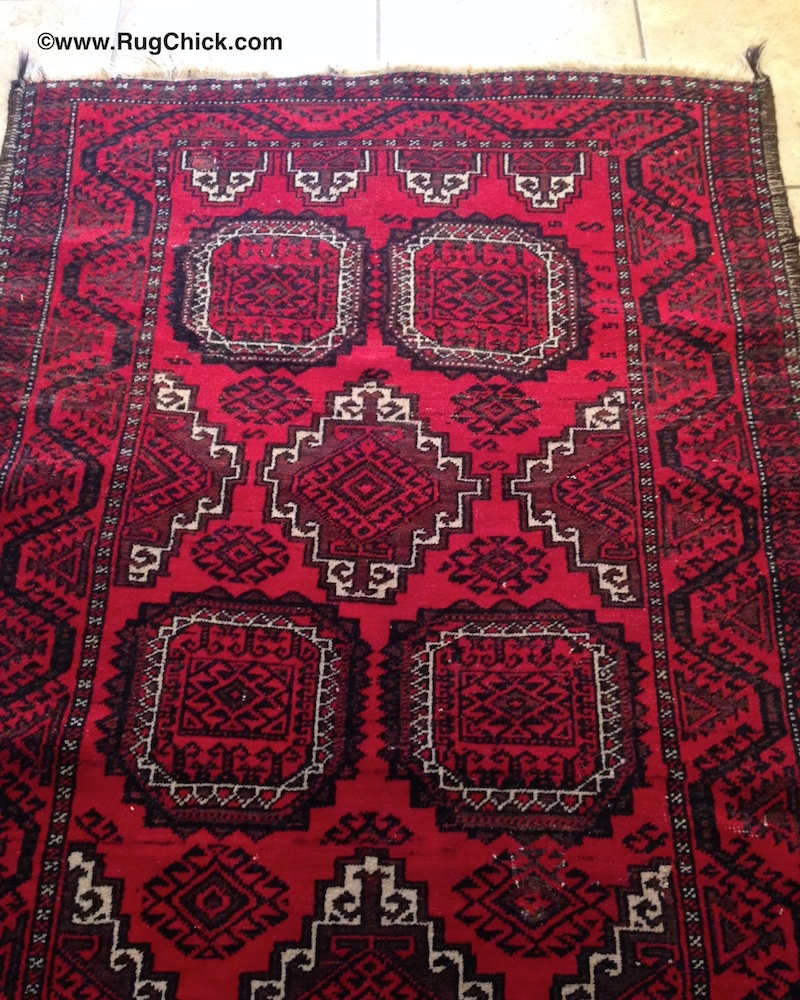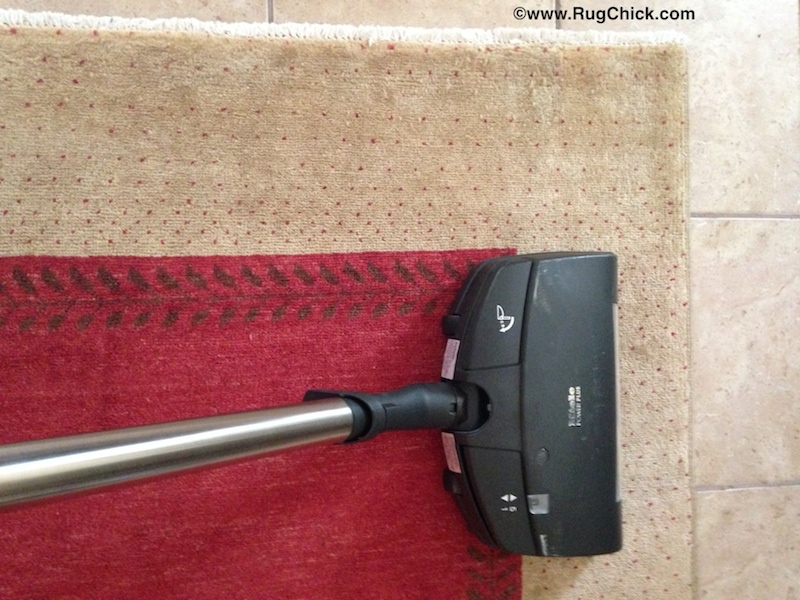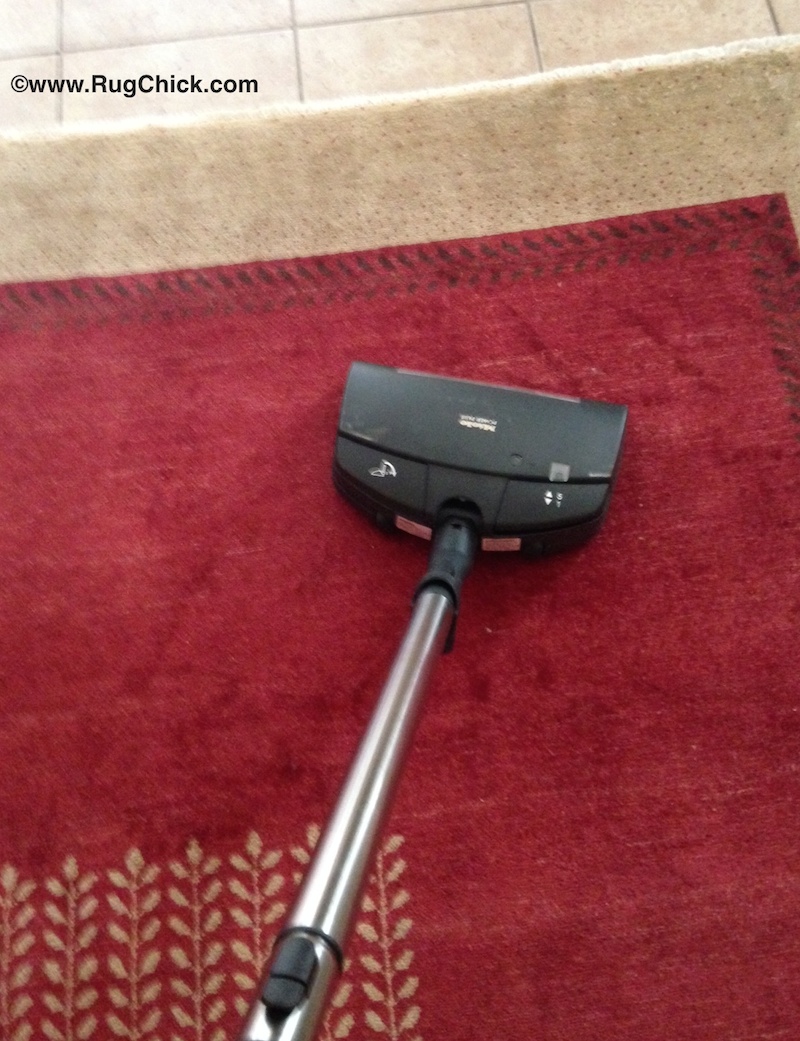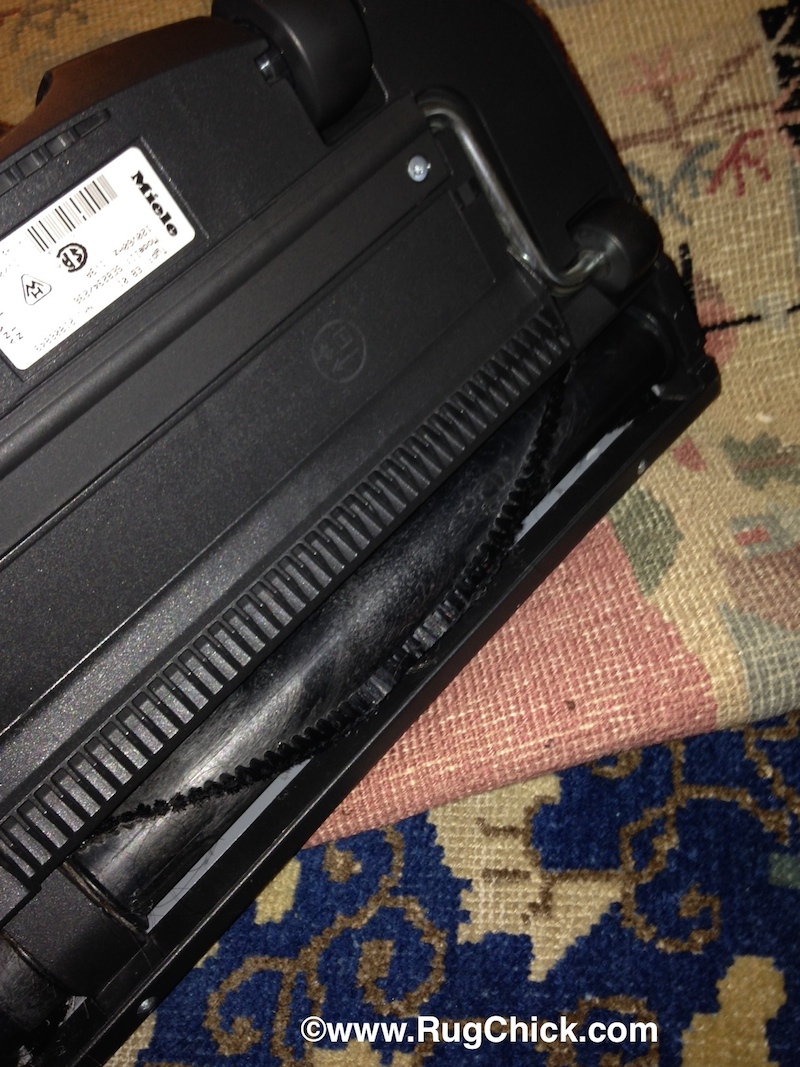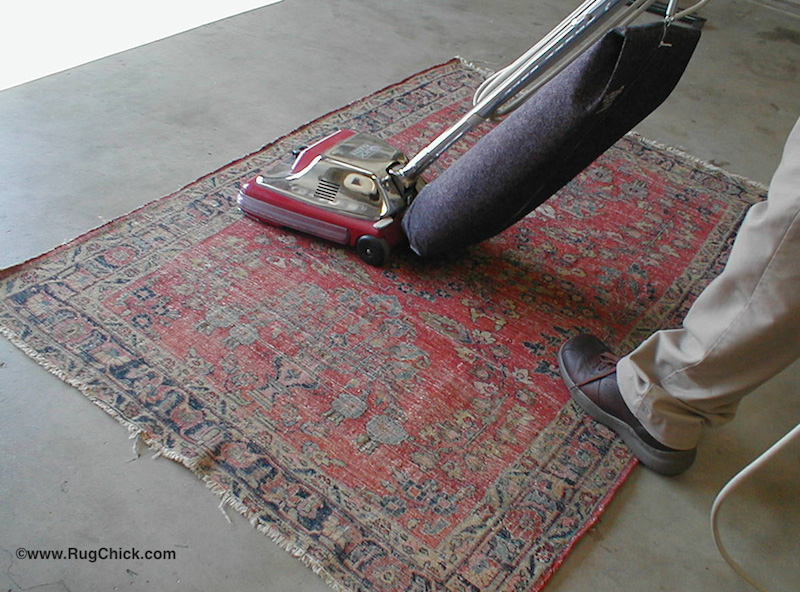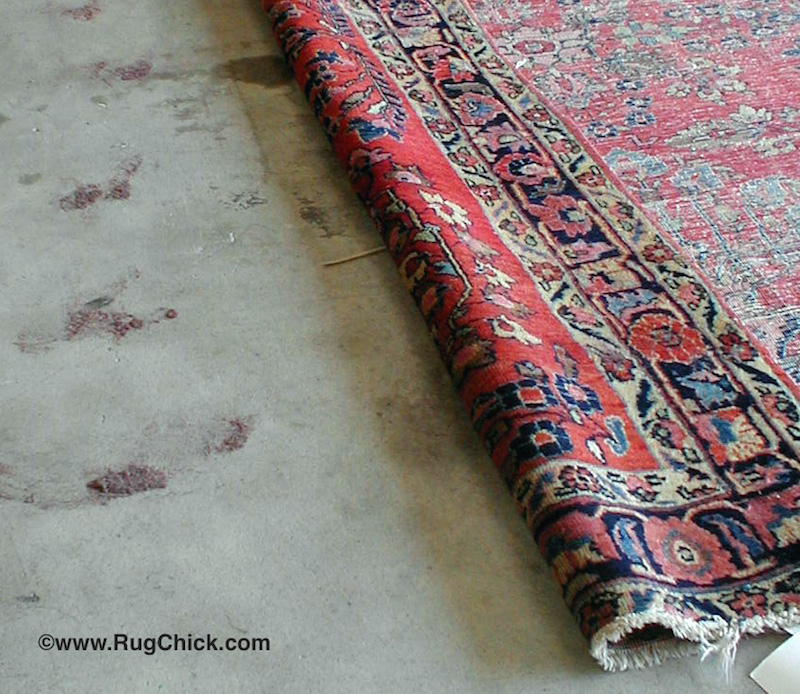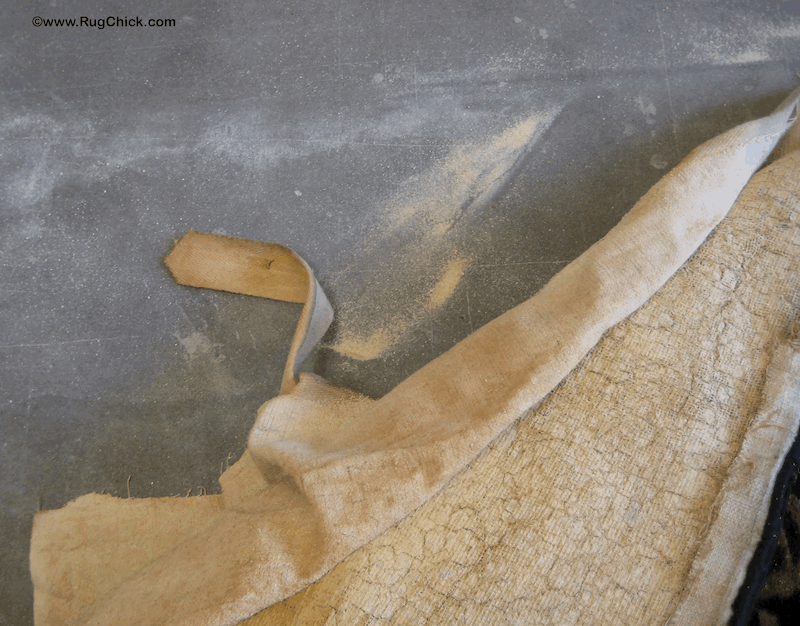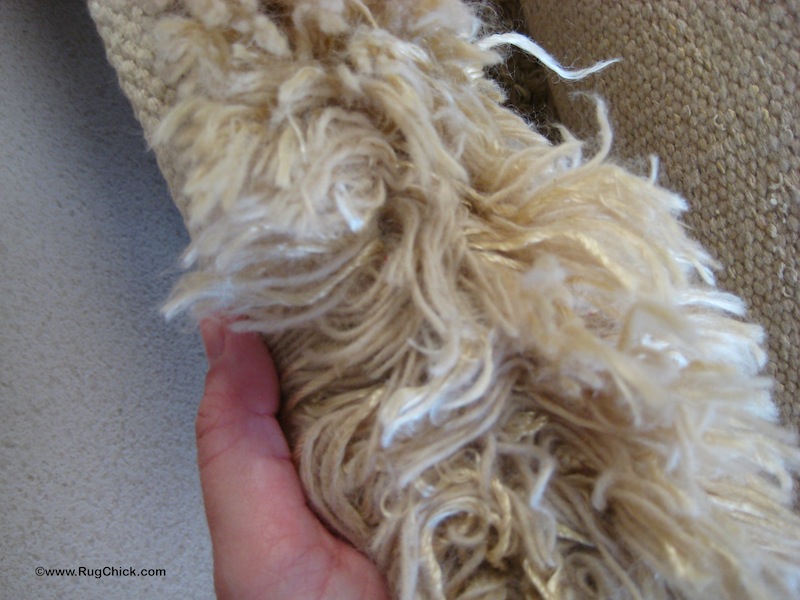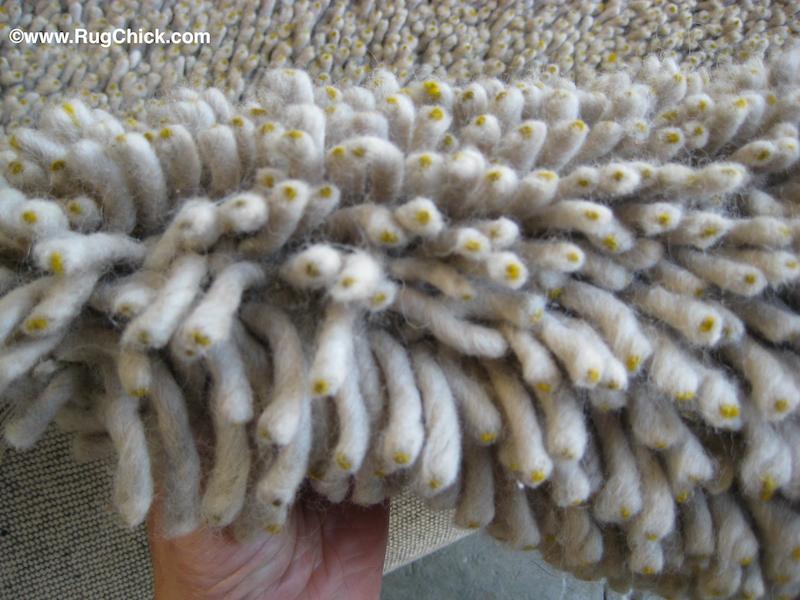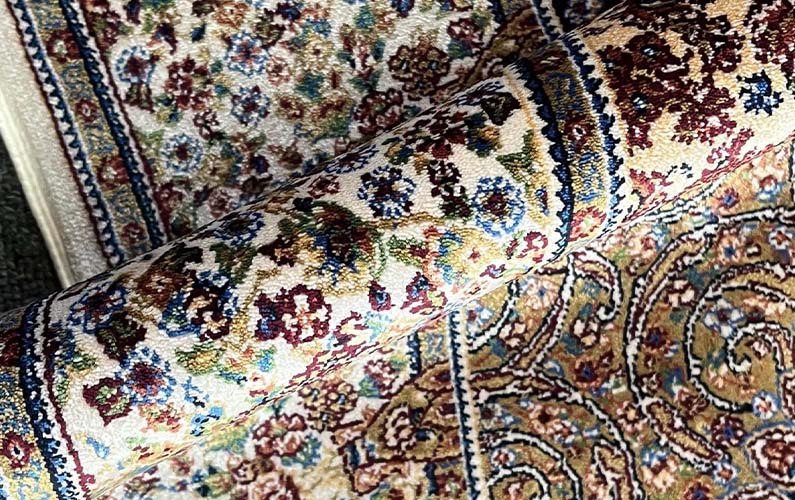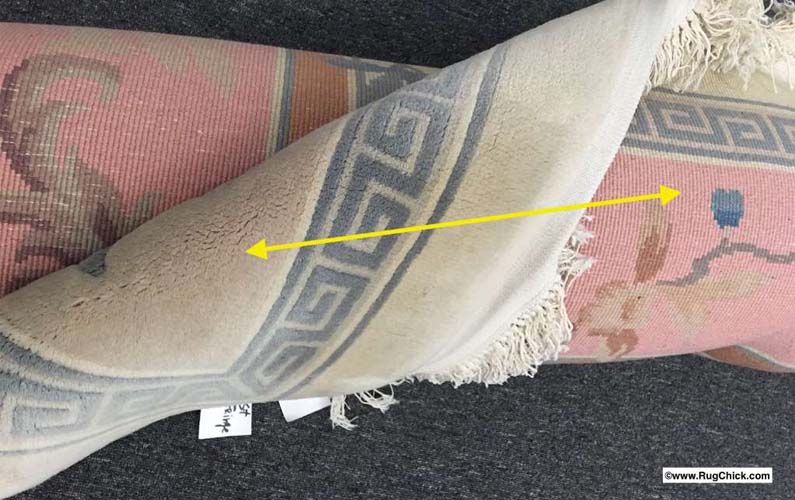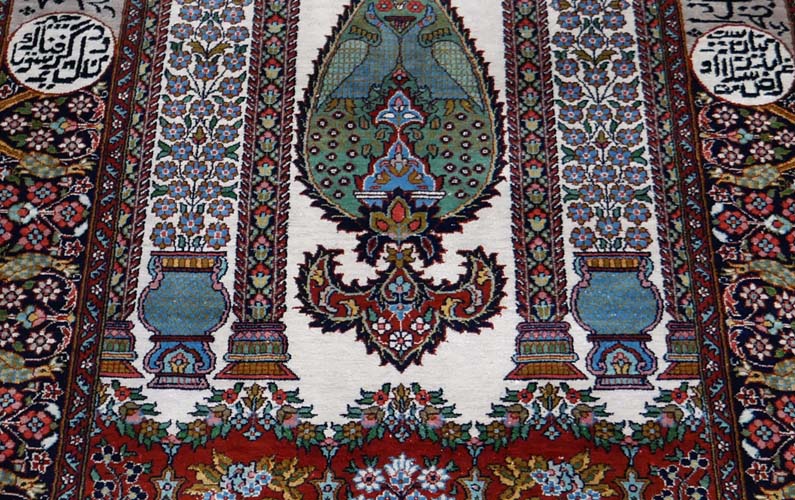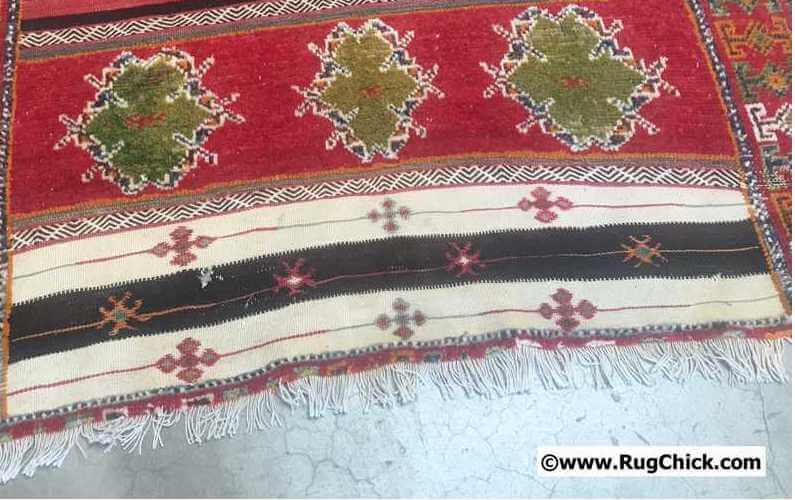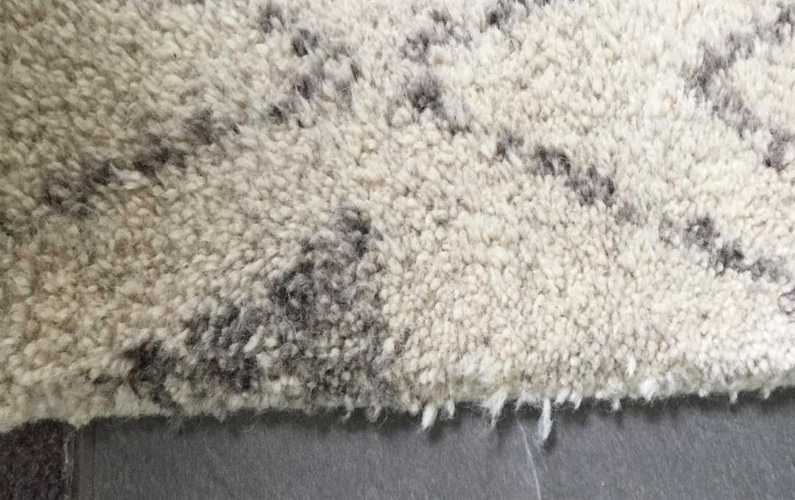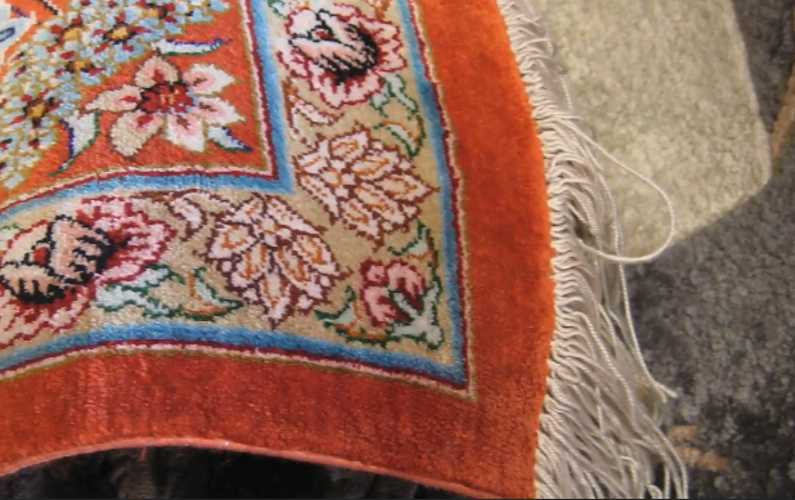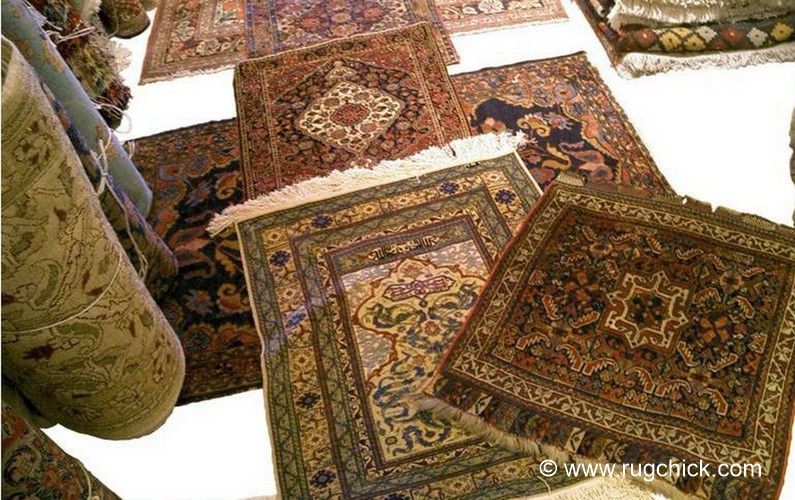How do I vacuum my wool rug?
One of the most frequent questions I am asked is “Is it safe to vacuum my rug?”
The answer is: It depends on your vacuum, and your rug. There is no one “best” machine to use on every textile.
However, vacuuming your rug IS THE VERY BEST THING you can do in order to protect the longevity of your favorite rugs, and to help keep your living space air clean (wool rugs act as an excellent air filter). So let’s talk about rugs and vacuums.
This video is the best way I have seen the damage caused by dust/dirt/grit explained in relation to rugs. This short video on “how often should I clean my rug” is spot on regarding rugs and what causes wear and fiber damage.
The message at the end states that:
WOOL rugs should be washed every 1 to 3 years depending on:
- The level of activity on the rug
- The quality of the wool
- Whether or not the rug is being PROPERLY vacuumed.
Regarding the first factor of ACTIVITY, low traffic rugs would need washing less often than higher activity rugs. Many of our clients with pets, or young children, wash their main room and entry rugs annually. Guest room rugs or rugs in low use rooms we may see every 3 years.
Regarding the second factor of WOOL QUALITY, better quality wool repels soil and spills better, and so spot cleaning and regular vacuuming are more effective. (Using wool fiber protector treatments, the ones APPROVED for use on wool, can help make lesser quality wool rugs have more repellency.) If your rug is repelling more contaminants, regular vacuuming can extend the time when it needs a full wash.
It is the third factor that is the one that often perplexes rug owners – Vacuuming PROPERLY. What does that mean exactly?
I want to lay out my opinion about vacuuming, what I do myself, and what I recommend to our clients as far as regular maintenance to preserve their rugs in between good thorough washings.
How To Vacuum Your Rug Properly
We are going to talk about three main categories of rugs: WOVEN, TUFTED, and SHAG.
WOVEN rugs are rugs were you can see the design/knots on the back side of the rug mirroring the front design. TUFTED rugs are rugs where the back side is covered up with material because it is held together with latex. SHAG rugs are the popular long pile rugs we are seeing all over the place today.
There is not one vacuum that is best for all three styles, but many better vacuums offer you options on using their suction/brushing abilities in different ways.
DUST Often
You need to think about the process of vacuuming your rugs as DUSTING them. And dusting them often.
If you have hard floors in your home, then you know how often a fine layer of dust settles on all of your surfaces. Depending on where you live, and how good your air filtration system is, you may be dusting your surfaces – counters and floors – daily, or at least weekly.
These fine dust layers are also falling on your carpet and rugs. You just are not noticing it as much as on your smooth, flat surfaces.
With your wall-to-wall carpet, those thicker, more compacted fibers can hold up to a full POUND of dry particulate per square foot before it begins to look soiled. That is a lot of dust and grit. (This is why true professional carpet cleaners will vacuum your carpet BEFORE they steam clean it, in order to remove the bulk of that soil before getting it all wet.)
With your WOOL rugs, which are a looser construction than your installed carpeting, the level of dry soil can reach a pound per square yard before it begins to look dirty. (It is not uncommon for us to pull 2-5 pounds of dry soil out of a rug with our pre-wash dusting.)
The danger with this grit not being dusted away when it has settled on the tips of your wool rug’s fibers is that it begins to get ground down into the base of the rug. When this happens, those sharp edged little tiny rocks cut at the fibers, and this is what creates the wear areas in your rugs. You begin to see the white cotton foundation fibers show through as white lines and white knots.
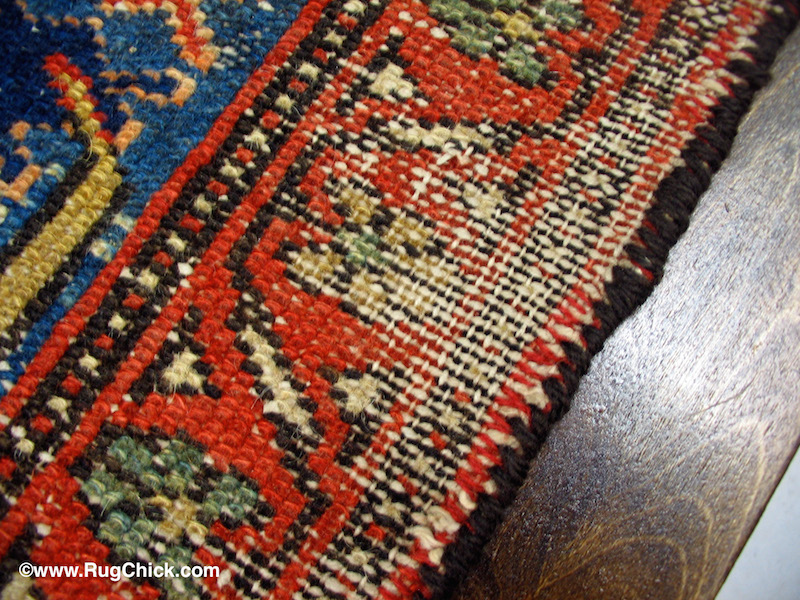
White cotton foundation threads exposed when wool knots are wearing down.
The trick then is to capture that dust/grit BEFORE it makes its way down into base of the fibers of your rug.
If you are not regularly vacuuming your rugs, and it has been 2 years or more since your last rug washing, then you will NOT be able to get ahead of the curve in protecting your rug. So go get it washed, and then begin this regular dusting routine.
If your rug has recently been washed, then you should not have any (or very minimal) embedded soil in the foundation, so the goal is to keep that build up of dust/grit low until the next washing.
With whatever vacuum you use, for dusting it is the “suction” that is more important than the power brushing. In fact, most brushes will be too aggressive for wool, so if you have a beater bar upright vacuum, you will likely set it at the very highest level (to keep it from digging into the wool pile) or shut the bar rotation off if your vacuum allows you to do that.
We are “dusting” the rug, not beating the living daylights out of it.
Vacuuming WOVEN Wool Rugs:
The vacuum that I own at home is a canister type vacuum. It is a Miele.
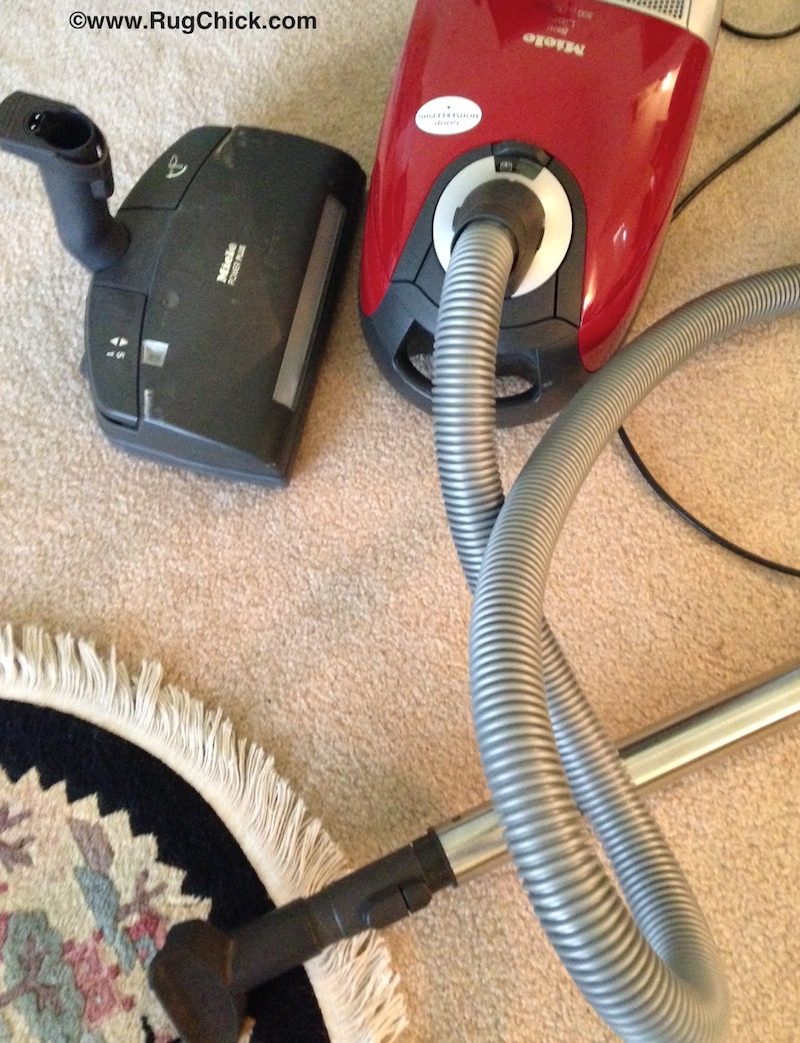
My Miele vacuum. I use it on floors, carpeting, and my woven rugs.
I am not putting a link to purchase a Miele in this blog because my goal here is not to sell vacuums. That said, I get asked often what I own, and so I did not want to keep that a secret.
Miele vacuums tend to be on the higher end of the vacuum market and will not be sold in the regular appliance aisle but rather in small specialty vacuum repair and retail shops. In our rug plant we also have vacuums from Sanitaire, Sebo, and a collection of carpet sweepers and industrial wet/dry vacs.
Though I would consider the Miele an “excellent” vacuum, there are many “very good” makers of vacuums at much lower price points. When you are shopping for your vacuum look at the options the machine you are looking at gives you. What I like about this Miele model is that I have a variety of vacuuming choices based on my rug types, which allows me to use the same machine for all of of my rugs, floors, and carpeting.
This unit has a detachable power brush head for deeper cleaning of my wall-to-wall carpet, as well as for my sturdier rugs. That head has a brush that can be turned on or off with a flip of a switch. It also has smaller tool attachments to switch to if I am dusting a hard floor, or handling my smaller rugs or my wall hanging rugs.
With WOVEN rugs, you have the loose, pliable weaves, and the sturdier, heavier weaves. Both require regular dusting, but in different ways.
WOVEN (Thinner pile and no pile rugs)
With the short pile, more pliable pieces, I use the upholstery (or stair) attachment rather than the power brush.
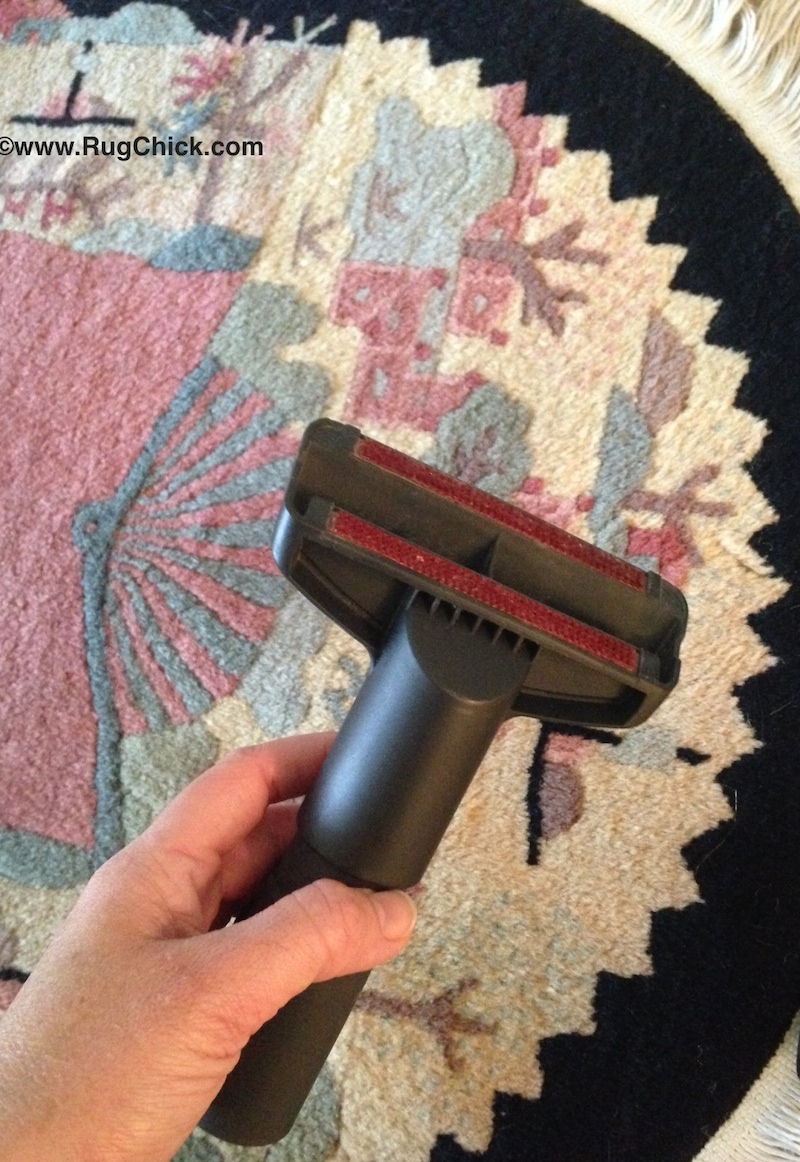
Use the upholstery tool on your vacuum to dust thinner woven rugs.
First you determine the direction of the rug pile. You do this by PETTING your rug to feel which way the knotted pile is pointing. All woven pile rugs have a direction to their pile.
You can tell on woven rugs when you are petting AGAINST the grain, and when you are petting WITH the grain. It is always important to have any brushing actions running WITH the grain whenever possible. Softer wool can break if you force action against the natural lay of the pile.
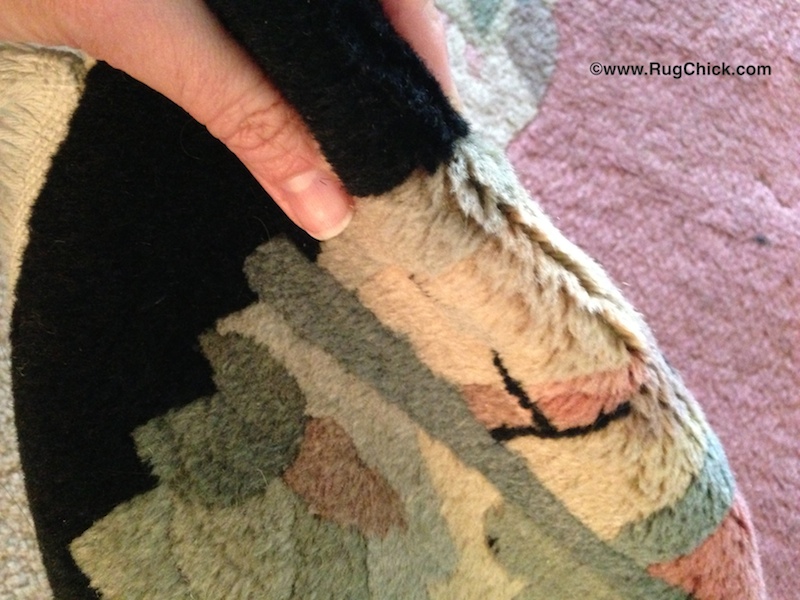
Every woven rug has a pile direction. Determine which fringed end the pile is pointing toward.
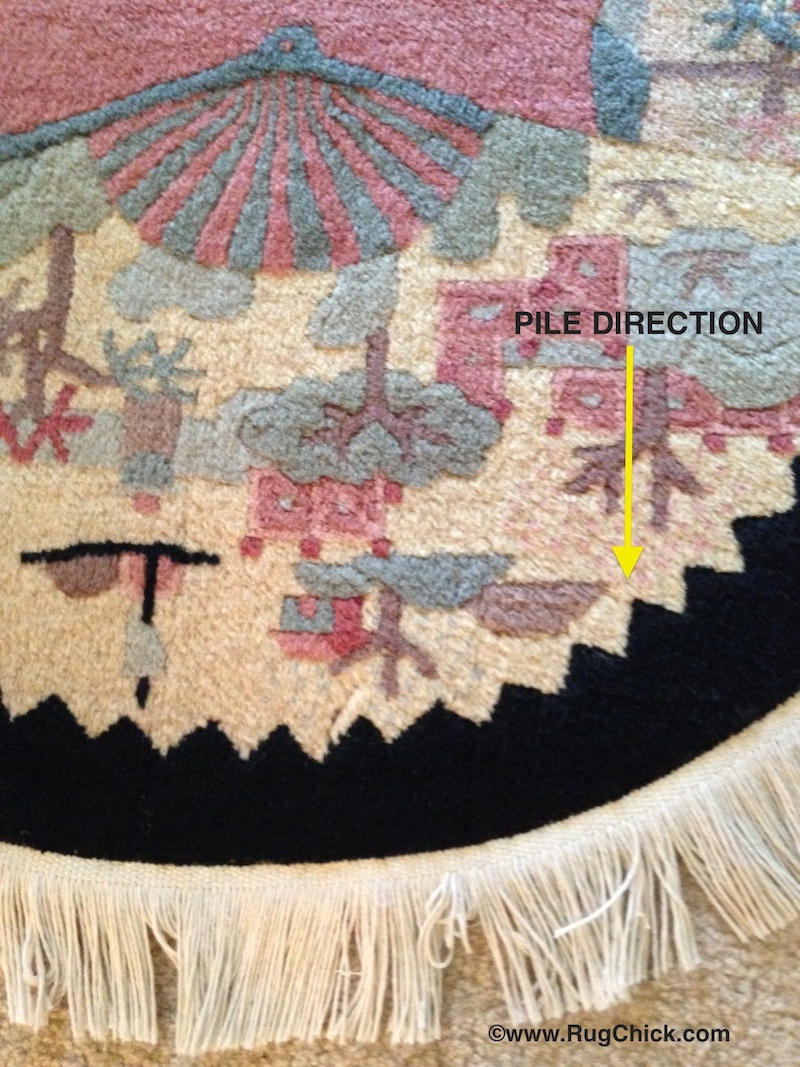
Pile direction is pointing downward on this Fette Chinese rug.
To “dust” this rug, you run the hand tool beginning at the top end of the rug, with short downward strokes moving from one side to the other side, with those strokes following the pile direction, until you have vacuumed the entire rug.
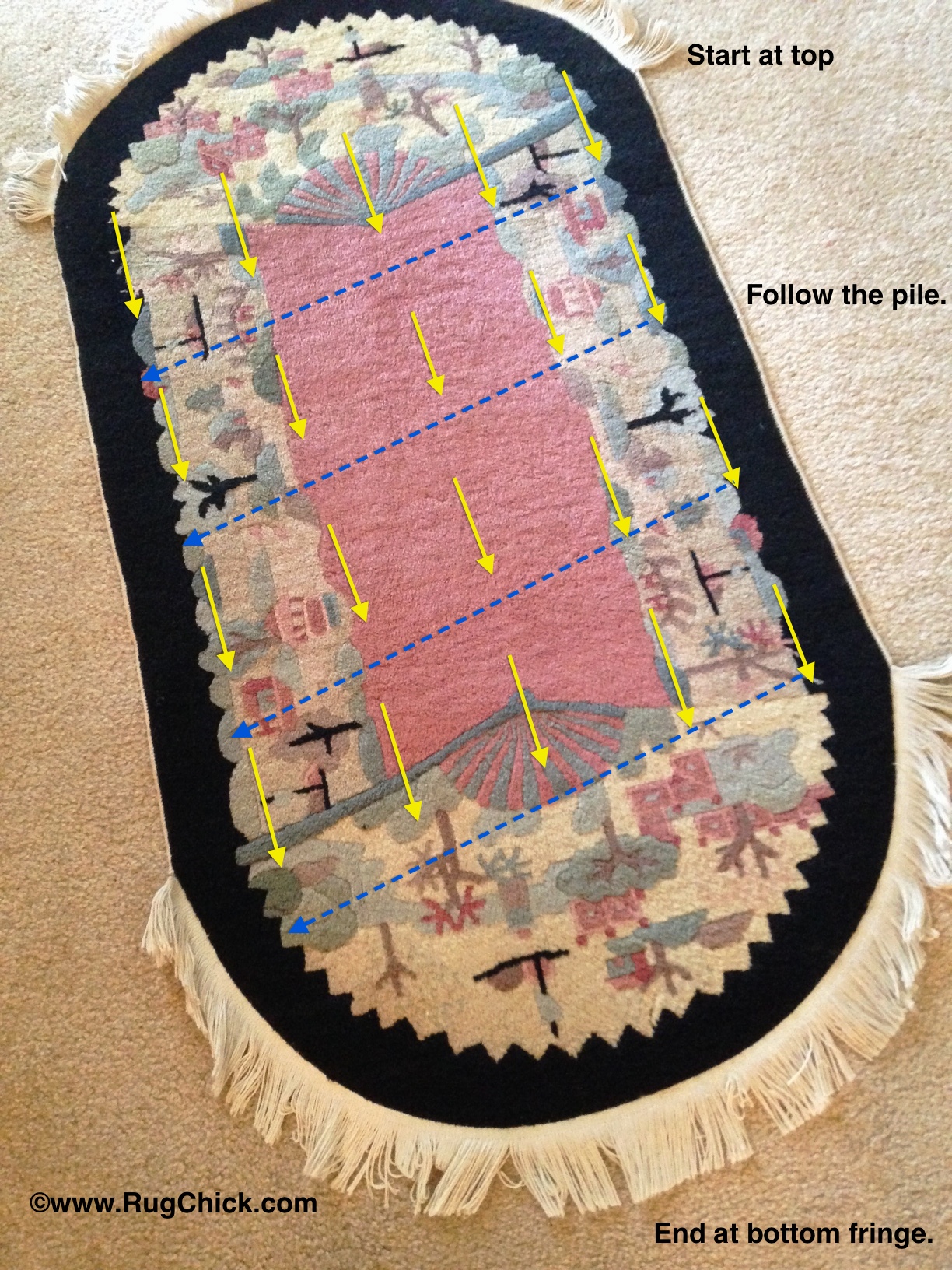
It is also wise to at least every other month dust the BACK of your smaller rugs. Because there is no pile direction on the back side you can simply run the vacuum tool across the back in any manner you want to. Though there may not be any “dust” on the back, this process can help prevent bugs from finding a comfortable place to make a meal.
Moths and carpet beetles like “still” areas with no direct sunlight, little air flow, and a food source. Flipping rugs around and dusting them disturbs them so they look for another place to eat. (If you really want to disturb bugs, then regular washing is the most disturbing thing you can do to them! Here are some tips on protecting your rugs from wool-eating bugs. => Rugs and Bugs.)
If you have textiles hanging on the wall, these also require regular attention.
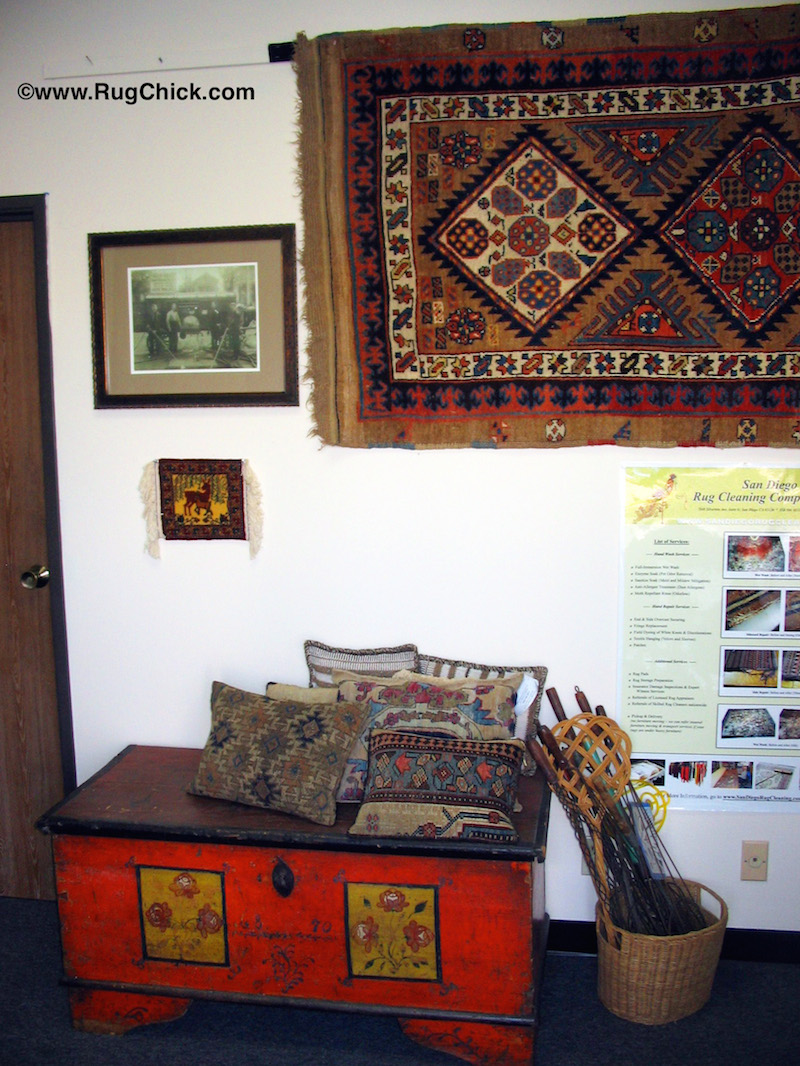
Rugs on the wall must also be dusted.
This is especially true if you have tribal rugs, such as American Indian weavings, on the wall. Since this wool tends to be less chemically processed than city weavings, they can be “tastier” to bugs. Also, some tribal rugs from areas like Afghanistan or Morocco, can sometimes have bugs hitch a ride over in the export process. It is very important to make sure an infestation does not take root in rugs up on a wall for years without being touched.
Using the vacuum attachment can work fine with sturdier wall pieces. Run with the pile direction if it is a pile rug, and run the strokes across the width with the wefts if the rug has no pile. (Just a reminder, WARPS run the length of a hand woven rug – they are the fringe tassels of the rug, and WEFTS run the width of a hand woven rug.)
With thinner flat woven rugs (rugs with NO PILE) on the wall, such as American Indian weavings, these tools may “fuzz up” the wool if the suction is too strong and the wool too soft. In this case when you are worried about affecting the texture, you can use a VERY soft brush (like a baby brush) and very carefully make soft brush strokes across the WIDTH of the rug (side to side with the wefts) to loosen up any contaminants that may be caught on the outermost fibers (dust, grit, webs, pet hair, or other residue that has gotten airborne).
This type of very soft brush agitation can also be used on SILK pile rugs being hung on the wall. Since these hanging pieces, wool or silk, are NOT being walked on with grit being ground into their fibers by someone’s full body weight, this type of soft brushing should remove what you need to remove until wash time.
Brush the facing side at least once a month, and the back side at least quarterly. Washing these hanging textiles can be extended by years beyond the 1-3 year recommended wash window if you are dusting regularly. The exception is if they are in an area with a lot of airborne contaminants that are greasy instead of dusty – smoking, cooking odors, cleaning chemicals being sprayed, heavy pet dander, etc..
WOVEN (Sturdier, heavier pile rugs)
The sturdier short pile woven rugs can have more of a proper vacuuming, but you do need to determine what is too much or just right for your pieces.
This is a heftier tribal rug, but because it has some buckling (often present in tribal weaves) I would be too nervous to use a canister power brush head or an upright vacuum on this rug.
I would use the upholstery attachment to dust this rug, just to be safe.
This rug has some buckling/wrinkles that are often present in tribal rugs.
This is a larger, and more robust rug from Pakistan:
This rug can be vacuumed.
With rugs like these, if I use the power head on my Miele, I turn the brush OFF, and I run my strokes side to side to run the suction across the rug rather than doing standard vacuuming strokes like I do on my wall-to-wall carpet with my brush on.
CORRECT: running the vacuum, with the power brush OFF, side to side across the width of the rug to dust it.
People are conditioned that if you have regular brush marks in the carpeting, that this means you have vacuumed properly.
While this may be true with your installed carpeting (and helps you remember where your work has been!), with rugs you are NOT trying to make marks because marks mean pile distortion. Though some sturdier rugs may be able to handle this a few times, over time this will wear down the rug. Today’s upright vacuums are just too aggressive for wool rugs (and please NEVER use them on your silk rugs).
When to use an UPRIGHT beater bar vacuum.
The time to use an upright vacuum on STURDY rugs is when you want to shake out soil from out of the base of the rug fibers.
Once or twice a year (if you are regularly and gently “dusting” from the front side weekly or bi-weekly), you will take your sturdier rugs in your higher traffic areas to a smooth surface, and run your upright across the BACK side of the rug.
The goal here is not to suck dirt up through to the back, but is to shake and VIBRATE the back of the rug to help dislodge soil embedded in those fibers toward the floor.
If you do this on a rug that has not been dusted regularly you will be amazed at the pounds of soil that you can shake out of that rug.
Here is another small rug that did not look dirty from the front, but had A LOT of soil embedded and ground into its foundation fibers. This grit causes fibers to break and valuable rugs to wear down and lose their value over time.
Often the soil you will see come out will be the color of the rug because pieces of cut wool are shaking out with the contaminants. This Kerman does not look dirty on the front, but holy mackerel – it was holding POUNDS of soil inside its fibers.
This is why you plan to regularly wash wool rugs. They hide soil very well. If you wait until they look dirty, then your rug is already damaged. The key is to wash within that guideline (1-3 years) based on those factors we opened with – or ask your professional rug cleaner whether the rug looks dusty/dirty. When you have seen hundreds of thousands of rugs before/after wash like we have… you know when a wool rug should look better than it does.
This level of dry soil that is usually hiding in wool rugs is also why you NEVER have wool woven rugs cleaned in your home. Could you imagine a carpet cleaning machine running on top of your rug with this much soil embedded in it? It would make MUD in the base of this rug, which leads to even worse damage than not having it cleaned – mildew/dry rot, dye bleed and discoloration, and of course fiber degradation with that rough edged soil stuck to those fibers and then walked on afterwards.
There are other reasons why wool rugs are not cleaned in the home. You can read about those reasons here Why Rugs Are Not Cleaned In The Home.
“I’m Worried About Harming My Rugs With My Vacuum.”
If you feel that the vacuum you own is just “too much” for your rugs, then trust your gut. And if you just do not want to hassle with dragging around a canister vacuum, or messing with a hand upholstery tool on a larger rug (yes, it is time consuming…) – then you do have another option. You can use an electric sweeper/duster.
These are essentially glorified “Dust Busters.” They are lighter, narrower, and do a decent job of dusting and grabbing “gunk” off of the floor. Some have heads/tools made for grabbing pet hair.
Now, I am not going to pretend that an electric sweeper is going to out perform a Miele. It will not. But, these little machines are light so the brushes are not going to dig hard into fibers and create damage – or if they have no brush, there are no worries there at all.
The deal with these are that you will need to run them more frequently than you would a canister vacuum. But because they are easy to move around, this might be okay. Use them on the small and large rugs alike, and dust them as often as you wipe down your counters for dust, because that same dust is settling on the tips of your wool fibers. The sweeper will pick that up from the rug if it is on those tips, so don’t wait until it gets mashed down into the fibers or you will need a “real” vacuum to try to reach that deeper dirt.
These type of electric sweepers are made by everyone – Bissell, Shark, Eureka, you name it. They are acceptable in-between dusting maintenance machines, with an occasional deeper dust with a real vacuum now and then, and of course a good wash to get your rugs pristine clean again every few years.
Woven rugs are the more valuable of the different rug categories, so dusting them properly helps you to protect your investment.
Vacuuming TUFTED Wool Rugs:
Tufted rugs present different dusting challenges than woven rugs do.
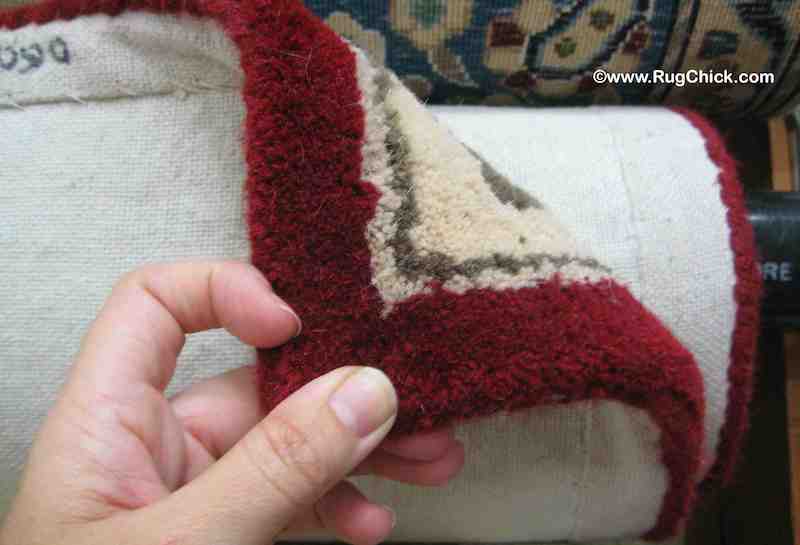
Tufted rugs are pile or hooked rugs that are covered on the back with material.
Tufted rugs are a fast way to make a rug. These are wool tufts looped into a mesh foundation, and then a large amount of latex adhesive poured on the back side to glue and hold those tufts in place. A material is then used to cover up the glue on the back side.
There are a small percentage of tufted rugs being made that are very high quality production. Edward Fields, V’Soske, just to name two. Those use high quality wool, sometimes silk, high quality dyes, and original designs in very well constructed rugs. But these are the exceptions to the rule.
Most commodity tufted rugs being sold everywhere you look are much lower quality, and this is especially true of those mass produced in India more so than in China. (Those countries are the two largest producers of wool tufted rugs.)
The cost to produce these rugs are kept low so that they can be sold at well under $1,000 for a room size rug. (If you are paying more than a thousand dollars for a wool tufted rug from India, please do some research to make sure you are getting quality product and that this is the reason for a high tufted rug price.)
One of the ways they cut the price, besides much less labor by not having to hand weave the rug, is to use lower quality wool and dyes. This often results in wool pile that sheds and easily breaks. If you can run your thumbnail across the pile of a tufted rug, scratch at it with your nail, and it breaks or feels brittle, then you are going to have problems if you vacuum too aggressively.
Wool that is overly chemically processed will be weaker than healthy, strong wool. Wool is a hair fiber, so it is no different than hair that has been overly lightened or bleached, and then gets brittle and breaks and loses color/sheen.
You will sometimes find poorer quality wool used in some woven rugs, but you find it more often in these tufted rugs. This is because a woven rug with a decent knot count requires wool to be twisted and tied in a way that requires some inherent strength to the weaving fiber. You simply cannot pull and tie weak fibers into small knots. (This is also why fake silk rugs have bigger, cruder knots than fine silk rugs, because viscose – and its relatives banana silk and bamboo silk – are compressed wood/cellulose by-products and they have no inherent strength to be used to twist tiny knots. They also get shaggy and have fiber pulls where good silk rugs never do.)
The challenge is, if your tufted rug has weak wool, how do you dust these? They are sturdy feeling, because they tend to be hefty, heavy rugs. But you probably notice fuzz on the surface, shedding in the house, and broken wool fibers in your vacuum bag.
Some new tufted rug owners obsessively vacuum their rugs because they want to get it to stop shedding. But this is not loose fibers left over from the shaving process that need to be removed. These are fibers breaking off from vacuuming, or pulling out of the mesh scrim foundation because the latex is not able to hold the tufts in place against the strength of your powerful vacuum.
So, you need to choose a canister with a power brush head where you can turn the brush OFF, and run the head side to side instead of against/with the pile running the length.
Or, you need to use the upholstery attachment and run it WITH the pile as you would with thinner woven rugs.
Or, you need to use an electric sweeper and dust that rug as frequently as possible to try to grab the dust so it does not break the fibers and put those wool pieces up into the air.
These rugs cannot be given a more deeper dusting by vacuuming with an upright on the back side because this will break down the latex glue that is holding the tufted rug together.
Back of a tufted rug with the material peeled back to expose the latex that is powdering and crumbling away after some age. This leads to the front wool fibers pulling away because the glue can no longer hold the rug together.
This means that you cannot help shake out the dust/grit that is getting embedded in the foundation of these tufted rugs.
Because these rugs are a looser pile density, more soil will work its way down into the rug than on a woven pile rug. This means these rugs actually require more frequent cleaning. The challenge with that though is that the backing on the lesser quality tufted rugs does not hold up well to repeated washings before the backing requires replacement. (This is a process where the old glue and powder is scraped away, the rug is then blocked with a new layer of latex applied, and then a fresh material placed on the back. This is not an inexpensive repair, so usually tufted rug owners replace their rugs after 7-10 years unless they love them and want to go the repair route. Some of the lesser quality ones from India today don’t even last 2-3 years before they are dumping powder on the floor and coming apart.)
If your dusting routine with your tufted rug is solid, and you have no serious issues with the rug (no large spills or any pet activity), then you can sometimes put off having the repair done by only having the rug surface cleaned with a carpet cleaning machine. This is just cleaning the top most fibers, but this keeps the foundation and backing from getting wet and can get you another couple years before you either get the real wash (and repair) or get another rug.
Whatever you do, do NOT rent a carpet cleaning machine and do this yourself. Those rental machines leave a large percentage of the chemicals and water they use behind in the rug. The last thing you want in your home is a tufted rug that sits around a few days wet. The odor and mildew risk will drive you out of the house.
Professional carpet cleaners use truck mount or portable cleaning systems that cost them thousands, sometimes tens of thousands, of dollars. These machines get out most of what they put in.
Do NOT have this work done in your home, it must be done in a facility with the right drying and blocking conditions.
We wash hundreds of tufted rugs every year – giving them a bath. If there are serious spills, serious soiling, or any pet accidents at all, these rugs MUST be washed to get them thoroughly clean. With tufted rugs from India, one of every four with us require a new backing repair (they just do not make them as well as they used to, they are cutting many more corners now to make those rugs cheaper). With tufted rugs from China, the repair is needed on only 1 of every 15 we see. China seems to be making better quality, longer lasting tufted rugs.
A surface cleaning with a carpet cleaning machine will not be as good as a wash of course, but when the choice is a wash and major repair cost versus just getting it clean enough to use another year or two before replacing, then that is an acceptable choice in this case for these lower cost rugs with no major contamination issues.
But your dusting routine does need to be militant to keep those fibers clean.
A woven rug can last a century or more. A tufted rug can last a decade if it is good quality (much less if it is not). Just know as you vacuum the tufted one, that the wool is more fragile even though the rug feels “tough” and hefty to you.
Vacuuming SHAG Rugs:
If you own a shag rug, then you have probably asked yourself – “How in the world do I clean this beast?!?”
You are not alone.
Shag wool rug.
Shag rugs today, whether wool or synthetic, are the most difficult rugs to keep clean, and they are next to impossible to dust. That said, here are a few tips.
Call Friends. Shake Rug. Repeat.
These rugs can be HEAVY, and the long fibers grab and hold everything. (If you ever want to freak out, bend open the rows of fibers in your wool shag rug and see what is inside them. It’s like lifting the cushions on the family sofa, you will find toys, food, hair, dirt, a spider, and perhaps the lost remote control.)
The place to start is to shake out what you can. I recommend to my clients to get a good bottle of wine for some friends, and bribe them to help you bring your shag rug back to life.
Take the rug out back, turn it FACE DOWN. Have a friend or family member on each corner, and then lift it and shake it up and down for several minutes. This flexing and up and down movement will help release anything caught up in the fibers, and will fluff it up as well.
Then, with the fibers all perky and popped up, lay the rug face up, grab your trusty wet/dry shop vac, and run the hose up and down every row.
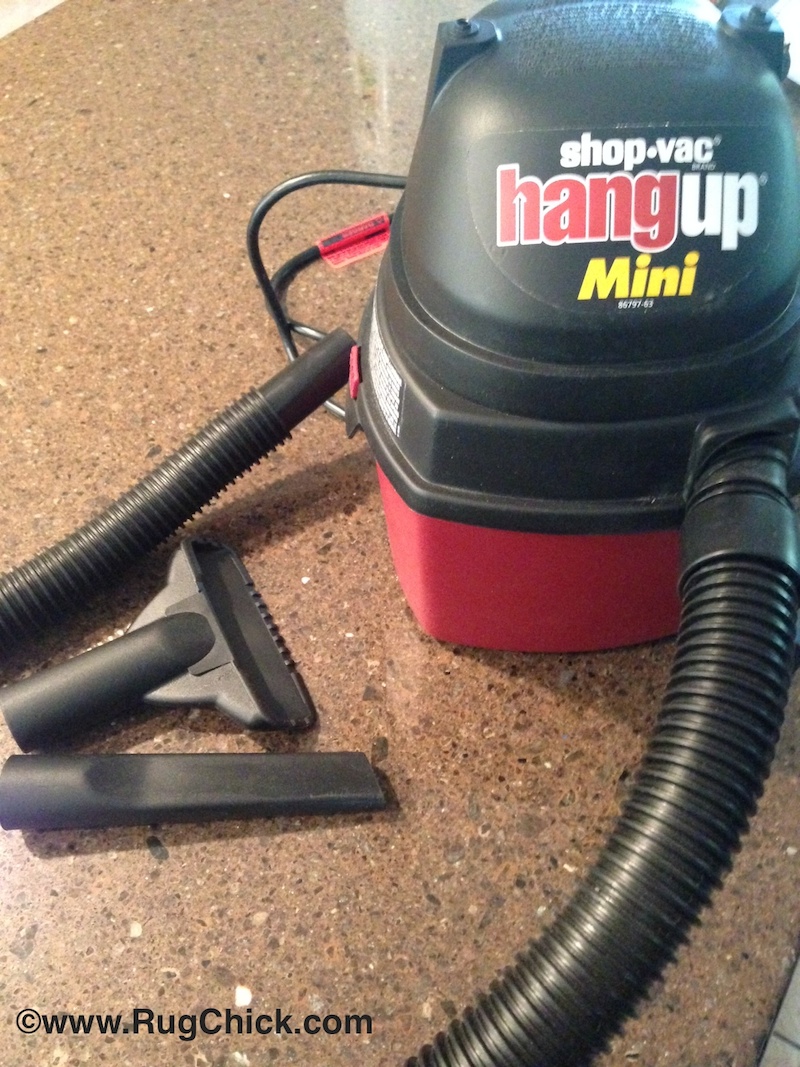
It is not elegant… but it is the only way to effectively dust a shag rug.
I use a tiny wet/dry vac one for this, because the bigger units can sometimes pull loose the tufts if the shag rug is not made well. (If you can easily pull out a long tuft from your shag rug, then you must be SUPER careful and you may not be able to dust it as well as you should.)
You cannot dust the BACK of these shag rugs because many have a construction style that makes it easy to pull out shag strands from the backside.
If the rug is small, you may be able to have the rug tumbled in a dryer (no heat, just air) to try to help shake out the soil. Some rug shops and dry cleaners have large tumblers to do this for dusting, but also to “fluff up” after cleaning.
Some WOOL shag rug owners also use a wide toothed dog brush to help brush and fluff up their rugs. If their shag rug is like a sheep dog, then this is possible. If they are the silky looking synthetic shag rugs, then this will not work because they strands will split and shred.
I do not expect shag rugs to be around much longer. People seem to have forgotten that we used to have shag wall-to-wall carpet in the 1970’s that was a nightmare to keep clean. This was around long enough for people to realize it was not cleanable, then they stopped selling it.
With shag rugs, as owners discover that the cost to wash these rugs tends to be at the highest scale of pricing (because it requires much more wash labor), and it can be very tough to regularly dust, they tend to be regretting their purchase.
They are cool looking rugs – they are just very difficult, and expensive, to keep clean.
VACUUMING RUGS: Who knew it would be so complicated?!?
I have to say, I did not expect my blog post on vacuums and rugs to be this long.
To be honest, I went on Google and could not find any clear (or correct) information on vacuuming rugs, so I decided to make this the place that hopefully every rug owner would find the answer they were looking for on this topic.
So let’s sum up. You can copy/paste this piece for future reference.
RUG DUSTING GUIDELINES
How often you need to wipe away the dust on your counters/tables is as often as you need to be “dusting” your rugs. Beater bar brushes on heavy vacuums, or super aggressive suction uprights, can tear/break/mark fibers. Adjust your tools as needed to not cause damage. The goal is frequent, SAFE, dusting to prevent abrasive soil/grit from getting ground down into the rug. Suction is more important than brushing. WOVEN RUGS (thin pile and flat weave): Dust with an upholstery attachment, or an electric sweeper. Go WITH the pile direction on piled rugs. Go across the width of flat woven (no pile) rugs. Needlepoint and embroidery rugs can usually be safely dusted with a sweeper or upholstery tool (do NOT use an upright vacuum on these). Dust weekly or every other week. More frequently if you live in a high dust area. WOVEN RUGS (sturdy short pile): Dust with a vacuum across the width. Turn the brush off if you have a power brush head, or set the beater bar at the setting farthest away from the rug so there is no abrasion. If this cannot prevent marks on the rug, then use an electric sweeper, and dust more often than weekly. Once a quarter, use your upright on the BACK side of the rug to shake out soil from the base of the fibers. Be careful around edges and fringe to not suck them up into the machine. TUFTED RUGS: If the wool breaks/sheds easily, then you cannot use your super duper upright on it. Check the bag or holding tank for shedding wool pieces. If you see a lot, then what you are doing is too aggressive for the quality of wool you have. If wool quality is an issue, then dust more frequently with an electric sweeper or use the upholstery head to have suction but no brushing action.
SHAG RUGS: Turn face down outside, and shake the rug with friends or family to try to loosen what has been grabbed by those long fibers. Use a wet/dry shop vac to dust in between each row of fibers. Take care to not pull loose shag strands.
WALL HANGING RUGS: Rugs hanging on walls, especially flat woven (no pile) rugs or silk rugs, can be lightly brushed with a baby brush to help lift up and remove any contaminants settled on the very surface of the rug. Microfiber cloths can also lift away fine dust. Do both sides to help deter bugs. Once a month if your home does not have much contaminants in the air, more often if you dust counters frequently. Hanging rugs in rooms with heavy cooking or smoke require more frequent cleaning because dusting/brushing does not remove “sticky” or greasy sources.
SILK and FAKE SILK (Viscose, Banana/Bamboo Silk): Though true silk is a very strong fiber, it is NOT a rug to be vacuumed with an aggressive upright vacuum cleaner. Fake silk (all of the viscose products) today are primarily wood and plant pulp compressed together and they are NOT strong. These also should never be vacuumed with an aggressive upright vacuum because this will pull away fibers and make your faux silk rug look like a cat attacked it with its claws. So upholstery attachments with suction and running the tool WITH the grain of the rug pile is how you regularly dust genuine silk, and all of the silk copies out there.
VACUUMING. When to WORRY
If you find that your rug is shedding, getting fiber pulls, or is marking up too much, then hold up on your dusting routine and contact your local rug cleaner.
EVERYONE who owns a rug needs a local expert to go to with maintenance questions, or for emergency help when your neighbor spills red wine on your rug. Get their advice before doing anything that may harm your rug.
If you do not have a local rug cleaner then you are welcome to send me a note with your concerns or problems. I receive a lot of email, but I will help as best as I can and as quickly as I can. I will also try to look for a local rug cleaner I know who may be able to become your future go-to-rug-helper. (A partial list of some of the rug cleaners I know personally is over at www.rugcleanerinfo.com. I am always adding to this list when I have the time to update it, so feel free to write me if you do not see a company in your area and I will see if I have one in my personal rug rolodex.)
I hope you found value from this post… and I hope you now have a good idea on how to “properly” vacuum your rugs.
Happy Rug Cleaning!
Lisa

